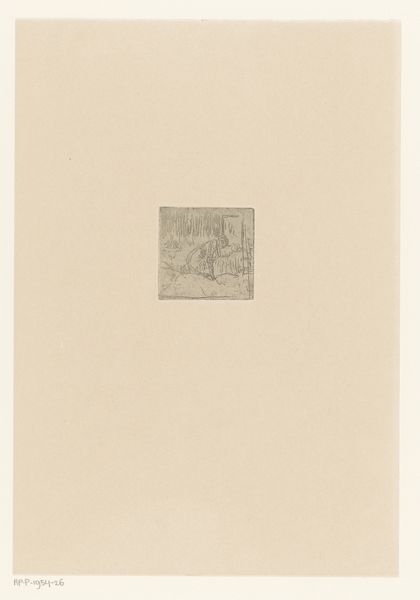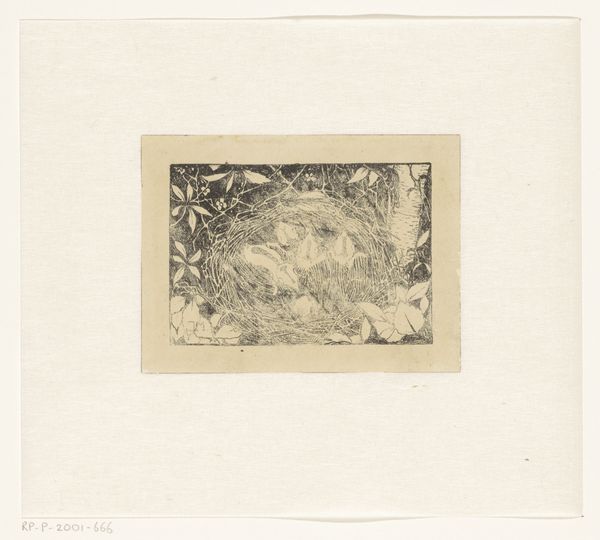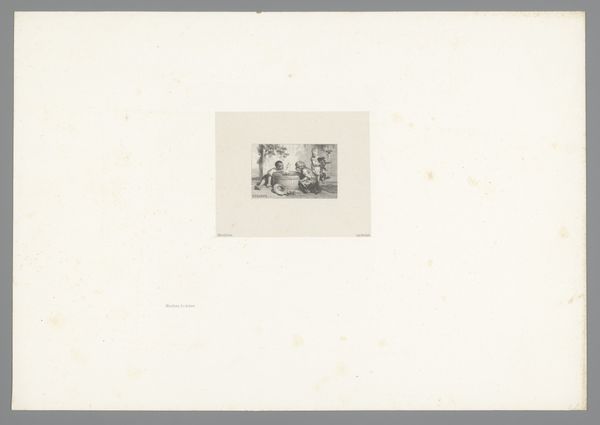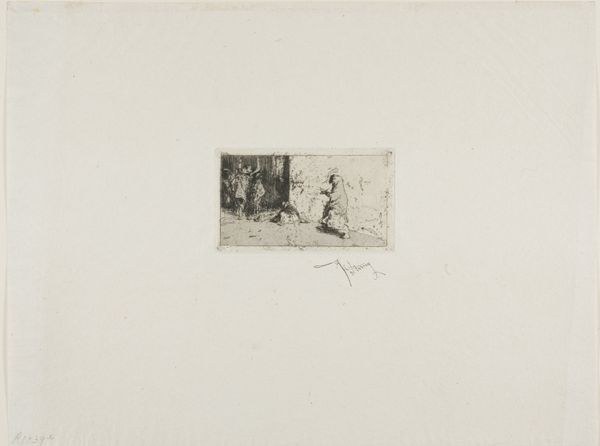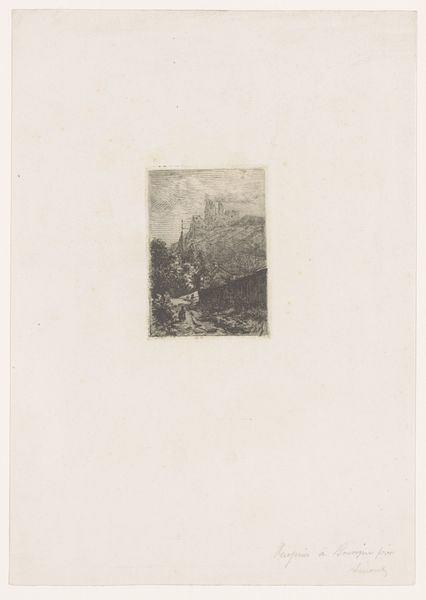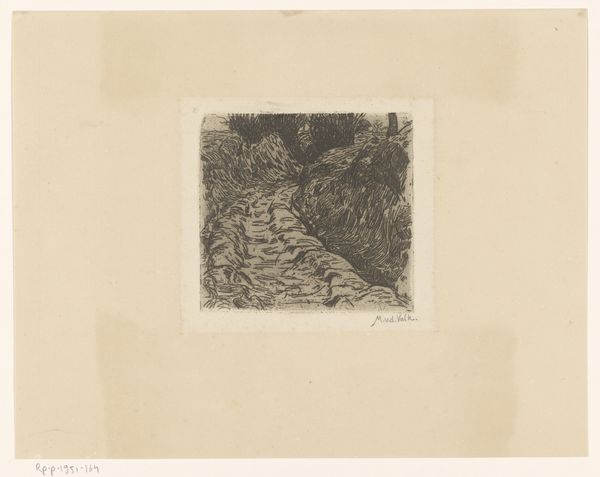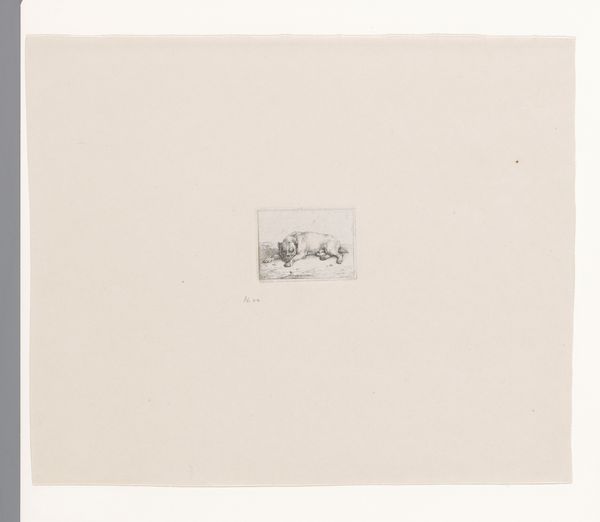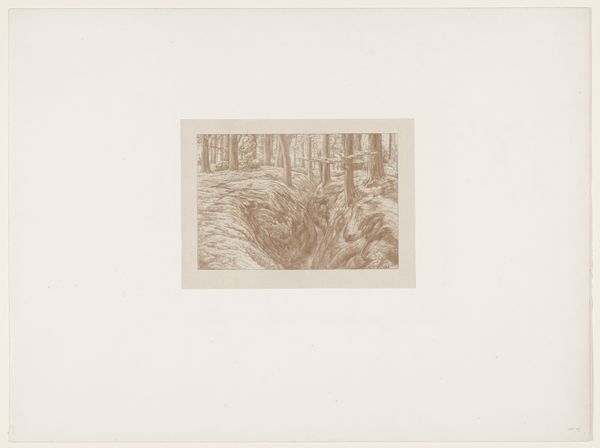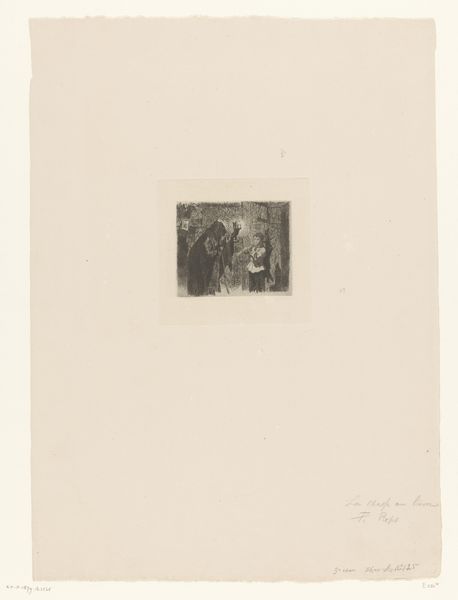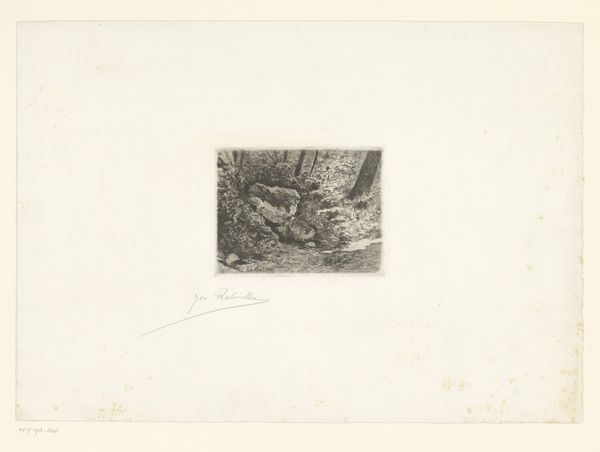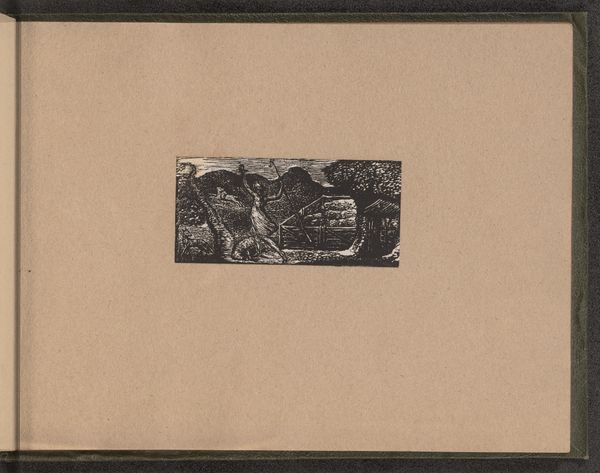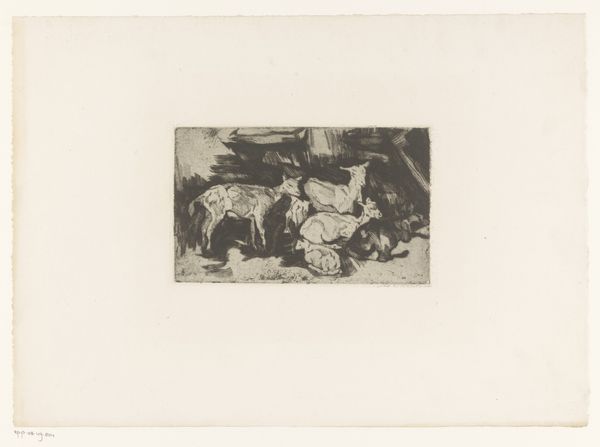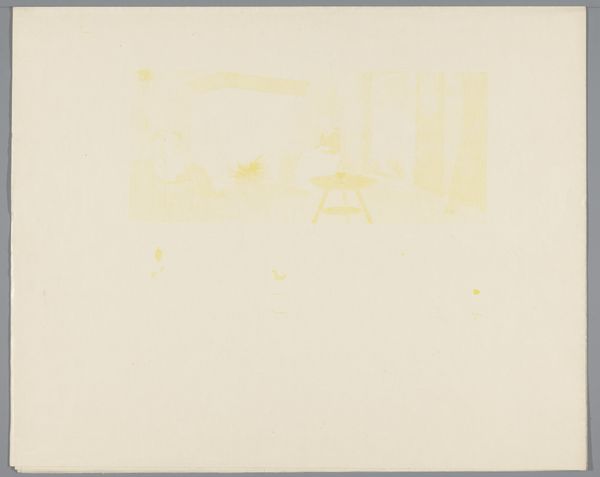
drawing, print, etching, graphite
#
drawing
#
dutch-golden-age
# print
#
etching
#
landscape
#
graphite
#
watercolor
#
monochrome
Dimensions: height 75 mm, width 101 mm
Copyright: Rijks Museum: Open Domain
Editor: Here we have Willem de Zwart's etching, "Stal met boer, koeien en wagen," or "Stable with farmer, cows and wagon" from 1924. It’s a small, monochrome print that feels… nostalgic, maybe? How do you interpret this work, particularly considering its subject matter? Curator: I see a powerful commentary on labor and the pastoral ideal. De Zwart’s choice of subject matter—the farmer, the cows, the wagon, all essential to the rural economy—immediately situates the work within a historical context of agricultural labor. But I'm more interested in looking at the romanticization versus the brutal reality of farming during the early 20th century. What does this contrast reveal to you? Editor: I hadn’t really thought about the possible disparity, the contrast. Perhaps the dark tones and the close quarters suggest the difficulty, the potential for hardship? Curator: Precisely. We can read the composition as a microcosm of social structures at the time, of labor relationships, even power dynamics within the agricultural community. Consider the implied narratives. Is this work upholding or questioning those structures? Who benefits, and at what cost? Editor: I guess it prompts reflection on the complexities and perhaps the struggles inherent in that way of life. Maybe I was too quick to see just nostalgia. Curator: Indeed. It pushes us to think critically about the representation of rural life and how it intersects with ideas of class, labor, and perhaps even environmental issues that would arise from intense agriculture. De Zwart gives a platform for examining hidden voices within dominant historical narratives. Editor: Seeing it in this light makes me rethink my initial assumptions entirely. It's not just a snapshot of a bygone era, but a deeper commentary on society. Thanks, that's very enlightening! Curator: Absolutely. By examining artwork through such layered, critical lenses, we empower ourselves to become active interpreters, challenging prevailing narratives and creating space for diverse voices.
Comments
No comments
Be the first to comment and join the conversation on the ultimate creative platform.
